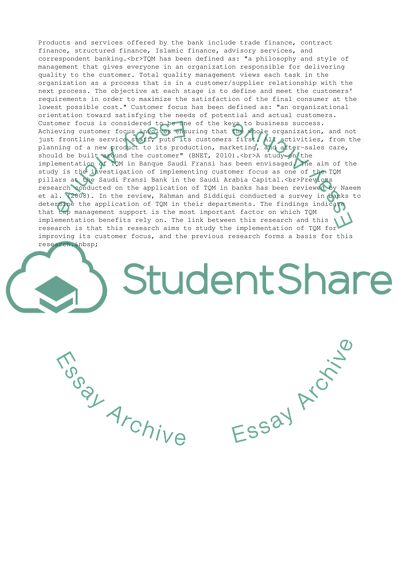Cite this document
(The Customer Focus as One of The TQM Pillars at the Saudi Fransi Bank Research Paper, n.d.)
The Customer Focus as One of The TQM Pillars at the Saudi Fransi Bank Research Paper. Retrieved from https://studentshare.org/business/1737932-investigation-of-implementing-the-customer-focus-as-a-one-of-the-tqm-pillars-at-the-saudi-fransi-bank-in-the-saudi-arabia-capital
The Customer Focus as One of The TQM Pillars at the Saudi Fransi Bank Research Paper. Retrieved from https://studentshare.org/business/1737932-investigation-of-implementing-the-customer-focus-as-a-one-of-the-tqm-pillars-at-the-saudi-fransi-bank-in-the-saudi-arabia-capital
(The Customer Focus As One of The TQM Pillars at the Saudi Fransi Bank Research Paper)
The Customer Focus As One of The TQM Pillars at the Saudi Fransi Bank Research Paper. https://studentshare.org/business/1737932-investigation-of-implementing-the-customer-focus-as-a-one-of-the-tqm-pillars-at-the-saudi-fransi-bank-in-the-saudi-arabia-capital.
The Customer Focus As One of The TQM Pillars at the Saudi Fransi Bank Research Paper. https://studentshare.org/business/1737932-investigation-of-implementing-the-customer-focus-as-a-one-of-the-tqm-pillars-at-the-saudi-fransi-bank-in-the-saudi-arabia-capital.
“The Customer Focus As One of The TQM Pillars at the Saudi Fransi Bank Research Paper”, n.d. https://studentshare.org/business/1737932-investigation-of-implementing-the-customer-focus-as-a-one-of-the-tqm-pillars-at-the-saudi-fransi-bank-in-the-saudi-arabia-capital.


